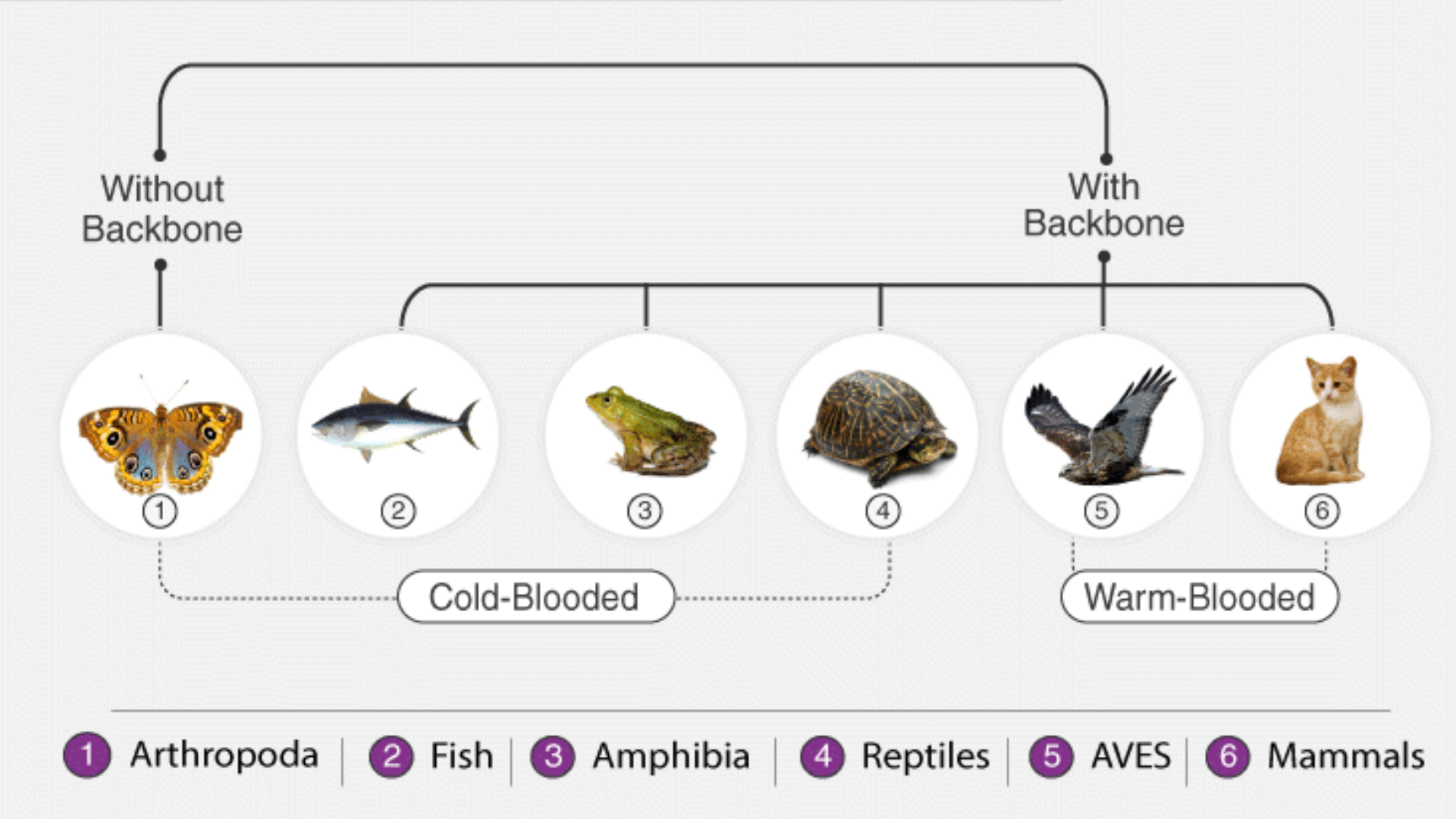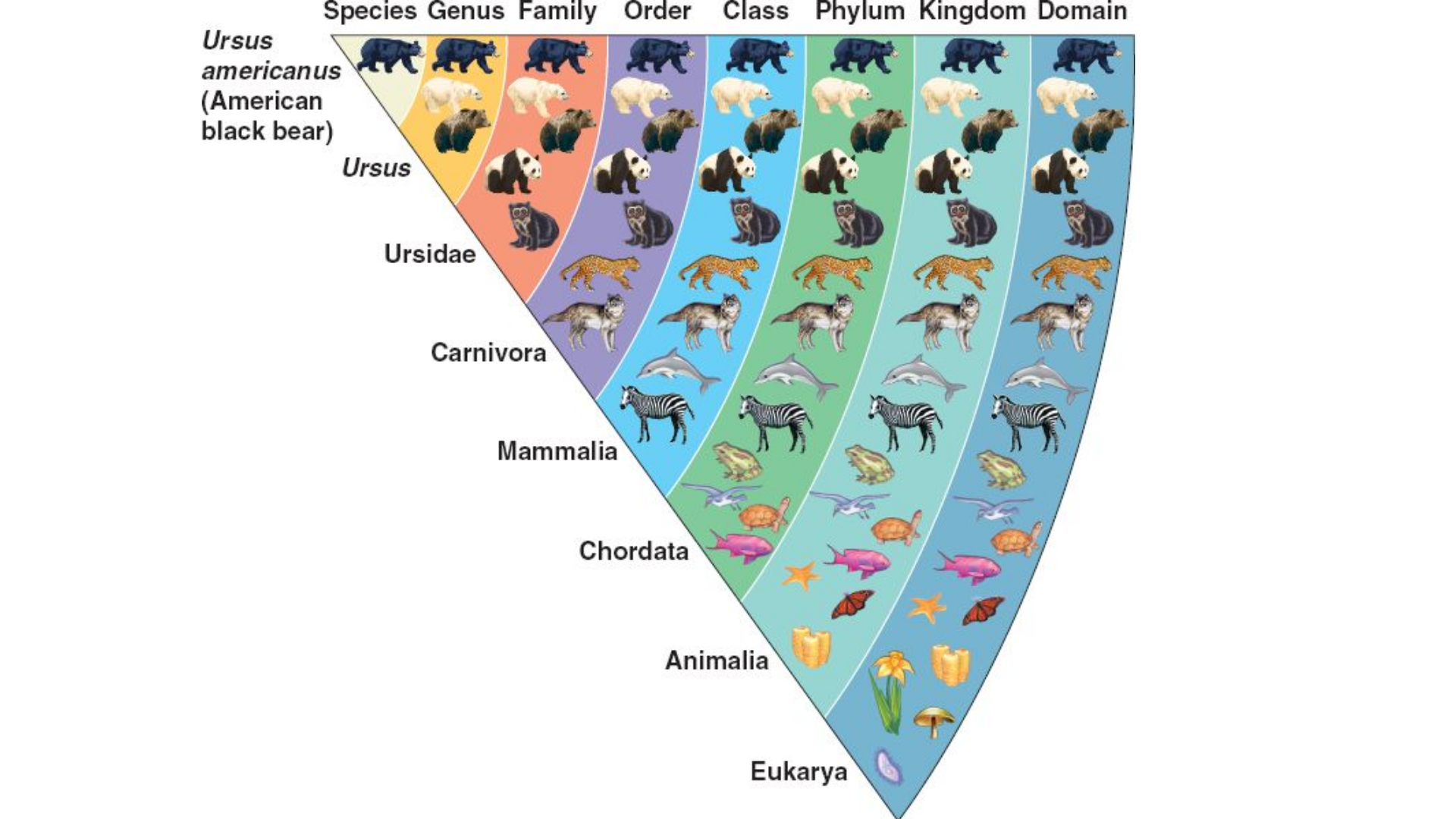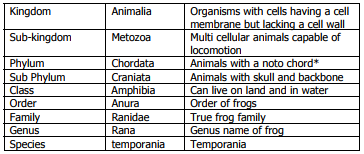
Scientists (known as taxonomists) divide all the animals and plants and all other living organisms (including micro-organisms), into groups. This is done to allow comparisons to be made amongst like and unlike organisms. Knowing whether an organism is related to another makes it easier to study them.
The different groups of animals or plants are grouped together depending on certain physical or chemical characteristics that they have in common. Taxonomists historically, grouped organisms into five kingdoms. More recently, taxonomists made a new division and in modern Biology there are 6 kingdoms. We will be concentrating on the animal kingdom – properly known as Kingdom Anamalia – the multicellular animals.
Basic Principles of Taxonomy
Click here to view a video that explains what Taxonomy is.
In some ways the methods used in grouping organisms resemble the logical basis of any system of cataloguing of objects, whether of merchandise in a store or books in a library. Here the articles are carefully named and then arranged in a group, or sections, so that any particular article will have more features in common with other members of their group, than with those in other groups. Small groups can in turn be arranged into large groups and this placing together of like objects facilitates their identification by the user of the catalogue.
Usually, the needs of the user of the catalogue will determine the features, which are selected to form the basis of classification. This is true to some extent of the classification of organisms but in this instance, there is some difference of opinion as to the aims and objects involved. In order that the procedure in classification shall remain standardized throughout the world, an international committee on Zoological Nomenclature has been established which has published a set of rules for the guidance of taxonomists.
The accepted scheme of classification is a development of that initiated by the Swedish Naturalist Carolus Linnaeus in his book Systema Naturae published in 1758. It was he who first devised the binominal system of nomenclature in which every species of animal (or plant) is given two names. One of these is the specific or trivial name and it differentiates the species from all others, whilst the other, the generic name (which is placed before the specific name), is shared by other related species, which are considered to be sufficiently similar to be grouped in the same genus. Both specific and generic names are always constructed in Latinised form (in the Latin language) and are always printed in italics (or underlined). The generic name having a capital and the specific name a small initial letter.
One of the most familiar animals to learners is the common frog. Scientifically, this animal is named Rana Temporaria, Rana being the generic name and Temporaria the specific name. Formerly, morphological features were the chief, if not the sole, criteria used in defining species, but now genetics, cytology, physiology, and other branches of zoology contribute their quarter of evidence to define each specie or even sub specie.
Once determined and listed, species can be arranged in larger groups and it is in these that the chief differences in scheme of classification become apparent. Thus, as mentioned above, species having many attributes in common are placed in the same genus. So, the common frog, Rana Temporaria, belongs to the same genus as the larger, continental frog, Rana esculenta and, with other species of the same genus, is placed in the family Ranidae. Families with common characteristics constitute an order, and orders in turn are grouped into classes. The larger groups of the animal kingdom are the phyla, which contain, in some instances, very many classes.
The animals in each phylum, although displaying a wide range of form, have their bodies contracted on the same ground plan, but differences between phyla are very great when compared with these between the other categories.
To summarize the full systematic position of the common frog can therefore be given as:

